#MASLED 2019
Explore tagged Tumblr posts
Text

5 December 2024, 12:00 pm EST
Online Zoom lecture
The Hill of Ariadne? The Minoan Peak Sanctuary of Stelida, Naxos
TRISTAN CARTER (Department of Anthropology, McMaster University)
Stelida comprises a distinctive, double-peaked hill on the northwest coast of Naxos, some 3.5 km linear distance from Grotta, the island’s Bronze Age center and main harbor. While best known as a Palaeolithic chert source, excavations in 2019 atop the 151 masl southern peak revealed a religious complex, whose character is heavily Minoanized. This talk details the excavation, architecture, chronology, and range of ritual practices performed at the site, then considers the significance of Stelida within the larger context of Neopalatial socio-economic dynamics, with a brief nod to the island’s mythic backdrop of Theseus, Ariadne, and Dionysus.
To register, please click here.
1 note
·
View note
Text

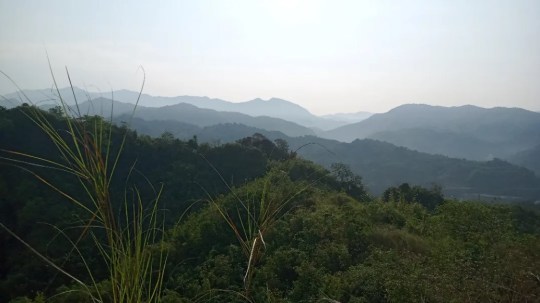

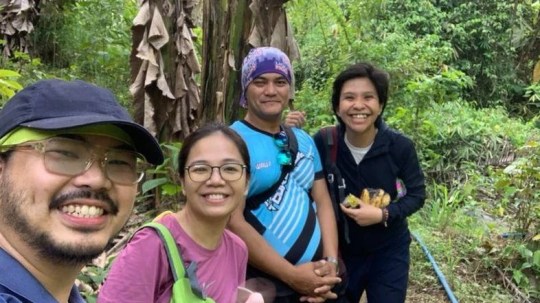
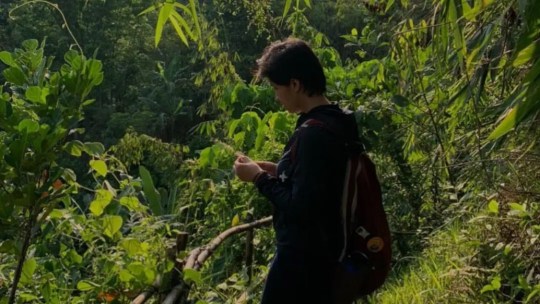
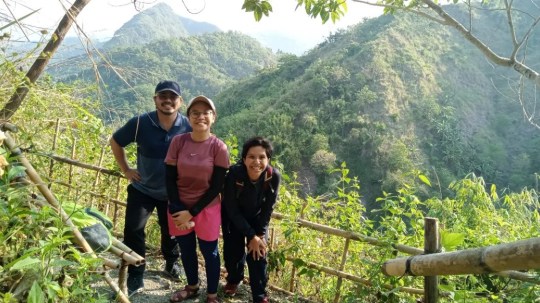
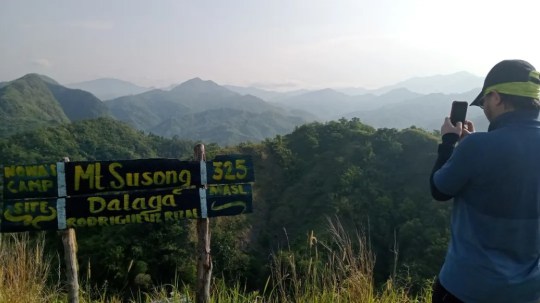
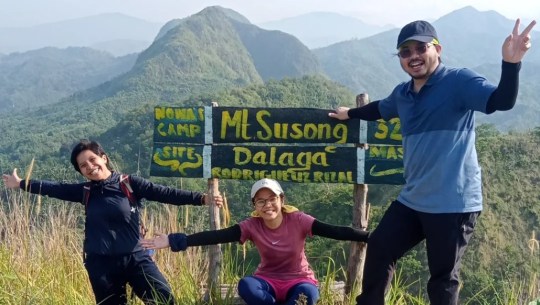
Capping off midsummer with a mysterious mountain! ✨ I first encountered Mt. Susong Dalaga in Batangas way back 2018, another one in Talim Island last 2019, and from this spot in Montalban this year! 💚 Yung totoo? Nasaan ba talaga ang original Mt. Susong Dalaga? 🙃
Mt. Susong Dalaga in Montalban stands 325 meters above sea level. ⛰️ Compared to other peaks I climbed early this year, it's way too low vis-a-vis Batulao, Naupa, and Kandungaw ranging from 600-950 MASL. It's (significantly) easy, so I consider it as my 'cool down hike'. 🤭 T'was very relaxing, to the point that I had bonding moments with plants, insects, and snails. 🌿🐞🐌
We didn't witness the sea of clouds from the summit, but got sooo amused with the gradient of the mountain range! 😱 From a distance, one can see how the colors of the mountains change to different shades of green and blue. 🤩 Perhaps it's a distinct sight in Montalban. Hence, the town is named as such because it's surrounded by mountains. ⛰️ So this could be the start of "bundok crawl". 🤪
At the peak, I tried to sneak inside a mysterious hole and dared to ask if I can fit there. 🤔 Of course, no one seconded that wild idea. 🤯 Our guide Kuya Wally suggested he'll go down and take our photos from that spot. But I was the first to jokingly dismiss it, "Hindi ka po namin kaya i-rescue pag stuck kayo diyan!" LOOOL! 🤣
We started the descent, passed thru the 'bamboo stage', and rested in a station where other friendly kuya's shared their harvest of bananas for FREE! 🍌 And it's my favorite rare type! Yaaay! 🙌🏻 On top of that, they allowed us to hand feed HANDSOME, their pet dog who likes fruits. Such a cutiepie! 😍
Congratulations Lei on your first climb! 👏🏻 May your mother mountain give birth to more. Hehe! 😅 Thanks Ace for adding an epilogue to my trilogy hike! Cherry on top appreciated! 🍒 'Til next time with Fillian! 🐶
1 note
·
View note
Text


2 notes
·
View notes
Photo

Get to know me:
Hi, am Hanif, 25 years old and currently studying at Universiti Brunei Darussalam taking Design and Creative Industries. As of now, I am in my second year first semester and I am writing this blog as part of my module assessment and this is my first time writing a real blog. Although I have used twitter to write some thoughts and ideas.
But hey, before I enrolled in UBD, I graduated from Politeknik Brunei’s in 2019 under Digital Media course. As a digital media student, we had to take digital photography and video production module as part of our compulsory modules, this is where my love in photography and video production started. I started with a Canon 750D with the 18-55mm kit lens and as a sane person and broke student with a limited budget that relies mostly on the school allowance, I watched tons of reviews on Youtube on what was the best budget entry level dslr on the market. I bought the camera for $BND750 at Rosephoto Studio (if you are into photography, you should know this shop lol). After 1 year with a bulky dslr, I switched over to the mirrorless system (Sony a6000) for my photography work.
When I got my first camera, I was so excited to try it out. Cat, cat, more cats, flowers, non interesting subject with a #bokeh hashtag LOL. Even capturing a normal and casual photo feels like a real photographer. Because owning a DSLR or bigger camera body=professional HAHAHA although after some time, I started to learn that no matter how big or small the camera is, it is always the person behind it. Trust me, there were times when the non photographer told me ‘nice eh camera mu ani�� (I mean thank you!) but you can give a person to take a photo with the latest camera model and still get a bad result (yes I know, it’s ‘subjective’ but stop using that as a reason).
I learned most of my photography stuff from Youtube. As a beginner photographer, hopping into the trendy stuff (YES I DID! Not proud btw) is like the first thing you would do when you got your first camera because it is trendy for a reason. The prism glass; blue and teal; and the ‘Brandon Woelfel’ inspired photo (yes, the fairy lights and blue/magenta look) were the trend back then, although over the years I created my own style rather than copying (pasta) other photographers’ style. Over 5 years, my style went from the trendy ‘moody’ looks to minimal ‘vogue’-ish look (nah jk). My biggest inspiration and influence would be the fashion photographer Jessica Kobeissi and local photographer Ejam Masle.
2 notes
·
View notes
Text
Lupine Publishers|Participatory Variety Selection in Increasing the Availability and Diversity of Improved Faba Bean (Vicia Faba L) Varieties in Some Selected Woredas Of Arsi Zone

Abstract
The experiment was carried out in Hexosa, Munessa, Digalu Tijo and Cholle districts of Arsi Zone with the objectives of enhancing production and productivity of faba bean on farmers’ fields and to improve linkage among stakeholders and create awareness on improved faba bean varieties and indirectly decreasing the cereal mono-crops systems of the areas. Four kebeles farmers training center were selected purposively based on faba bean production potential. Consequently, Oda jila kebele from Hexosa, Chaffa from Munessa district, Haro bilalo from Digalu tijo and Amuma salam bar from cholle district were selected. All management practices were done at the levels of local farmer’s levels for eight improved and one locally available faba bean varieties were shown and evaluated. The experiment was established on 25 m2 Demonstration Plots and DAP 100 kg/ha at the time of sowing applied to each demonstration plot with recommended seed rate. Both quantitative and qualitative data was collected through observation, group discussion on field day and data recording sheet. The significances of improved varieties along with local variety were also analyzed through SAS-software. While qualitative data were analysed through simple ranking and summarization. The result of the study indicated that the best varieties namely Gebelcho, Moti and Degaga were frequently selected as top ranking in all districts as final selections or adapted varieties. Therefore, these varieties are recommended for further popularization and scaling up in study area and similar agro ecology.
Keywords: Faba bean; Demonstration; Varieties
Introduction
Faba bean is the first most important pulse crops produced in Ethiopia both in terms of area coverage and annual production (CSA, 2018/19). It is grown at an altitude range between 1800-3000 masl, in place at the soil and weather are considered to be congenial for better growth and development of the crop. According to (FAO, 2017), in Ethiopia about 343,107.88 hectares of land annually covered in Faba bean with estimated production of 6,389,438.97 quintals. In Ethiopia, faba bean is the leading source of protein for the small holder farmers and used to make a number of traditional dishes. Moreover, the crop is source of income for producers either locally and foreign exchange for the country. It has also a line share on improving soil fertility through fixing atmospheric nitrogen and. In Arsi zone, Faba bean is cultivated in mid highland to highlands of the region occupies about 54.4% hectares of land annually with estimated production of 58.5% quintals from a total of pulse crop (CSA, 2019/2020). The regional (23.5 qt/ha) average yield of faba bean has remained low (CSA, 2019/2020). Even though the crop has a number of potential uses, the productivity of the crop is far below the potential and is constrained by use of traditional practices including unimproved farmer cultivar, poor agronomic practices, prevalence of insect pests and diseases and declining of soil fertility. However, crop production under varied agro-ecological conditions of the country would require modern varieties that fit to diverse ecologies. Individual farmers as well as Community based Seed Producer Cooperative farmers are highly demanding better yielding varieties to maximize their product and improve the livelihood of their families. Participatory Varietal Selection (PVS) has been proposed as an option to the problem of fitting the crop to both target environments and users’ preferences. Moreover, it is worth mentioning that there are sound scientific and practical reasons for farmer involvement to increase the efficiency and the effectiveness of a breeding program Therefore the present study geared to words identifying high yielding improved faba bean varieties adapted to the selected districts that are acceptable to farmers in study areas.
Materials and Methods
In the present investigation eight released faba bean varieties with local checks were evaluated in 2016/2017 at four Woredas; Hexosa(Oda jila FTC), Digalu Tijo (Haro bilalo FTC), Munessa(Caffa FTC),Cholle (Akiya FTC) and Cholle(Amuma selam bar FTC) in which all locations are found in Arsi, south eastern Ethiopia. All locations were representing highland areas with variable soil type i.e., dark clay-loam, clay-loam, loam Clay loam and clay loam respectively. The trial was laid down in a single plot of 5m x 5m size. Each variety was planted in rows with spacing of 0.4m between rows and 1m between plots. DAP fertilizer was applied at the recommended rate of 100 kg/ha at sowing. Seed rate of 200 kg/ha was used. Eight released faba bean varieties including Gora, Tumsa, Gebelcho, Dosha, Moti, Obse, Degaga and CS20DK, and one farmer cultivar (local check) was used for the study to seek farmer’s preferences through participatory variety selection. Both quantitative and qualitative data were collected through observation, group discussion on field day and data recording sheet by researchers’ groups and farmers separately. Data like farmer preference on disease and pest’s resistance, early maturity, drought tolerant, grain color, and yield data were collected through the prepared data collection sheet/record sheet by organizing mini field day and observation on farmer’s field. Invited participants were gathered at the host farmers’ field to assess the faba bean varieties at flowering stage, at maturity and at harvest, assisted by scientists, assistants from Kulumsa Research Center and agricultural experts from each Woredas. Out of the 113 participants at districts 27 were women (24%). During the evaluation farmers assembled to discuss what they thought were the important criteria for selecting a given variety at a particular development stage. Each criterion was scored from 1 to 5 (1 =Excellent, 2 = very good, 3 = moderate, 4 = bad and 5 = worst) for each variety. Participant farmers were also asked to give an overall score to each variety. Farmers were selected among participants at each district to evaluate varieties from the PVS trials. Each of the randomly selected farmers were given eight faba bean varieties and oriented to manage all plots equally. Farmers assessed the varieties at flowering and maturity and at harvest. At maturity, farmers scored each variety for earliness, seed per pod, and pods per plant; at harvest varieties were scored for seed size, grain color, straw yield and grain yield. Again, scores were given on a scale from 1 (excellent) to 5 (worst). At maturity and harvest, farmers were asked to give an overall assessment of each variety, using the same scale.
Data Analysis
SAS-software analyses were used for the crop performance concerning yield and yield components of the experiment harvested from PVS plot. Improved varieties along with local variety were also compared. While qualitative data were analyzed through simple ranking and summarization.
Results
Evaluation of Researchers
Mainly researchers’ evaluation was focuses on the yield status of all considered faba bean varieties across location in which the varieties shown a distinct statistical variation in grain yield that was significant difference among the faba bean varieties in each location (Table 1). Accordingly, at Hexosa district the highest yield were recorded for faba bean variety Gebelcho (4011kg/ha), Gora (3891kg/ha) and Dosha (3867kg/ha) whereas, the lowest yield were recorded for local check variety (1976kg/ha). At Munessa district, the highest yield were observed for faba bean variety Degaga(3912kg/ha), Moti(3867kg/ha) and Gebelcho (3621kg/ha) but the lowest yield were recorded for local check variety (2213kg/ ha). At Digalu Tijo district, the highest yield were observed for the faba bean variety Gebelcho (4123kg/ha), Dosha (3866kg/ha) and Degaga (3758 kg/ha) while the lowest yield were recorded for nearby available faba bean variety as a local check with (2613kg/ ha). Finally, at Cholle district the highly yielded faba bean varieties are Degaga (3853kg/ha), Moti (3704kg/ha) and Dosha (3441kg/ ha) while the lowest yield were recorded for local variety (2333kg/ ha) respectively. In conclusion the faba bean varieties like Gebelcho, Dosha and Degaga showed a stable yield performance across all location which put them prior rank, while the faba bean varieties used as a local check at each district and CS20DK were poor yield performance at all location that revealed the progressive improvement of yield and a wider adoption scope of faba bean varieties in Ethiopia. Similar works are reported for some improved faba bean varieties those showed a good performance in both yield and adoption rate across different location by [1,2,3].
Farmers’ Variety Evaluations
Farmers being the end-users of agricultural technologies are the primary beneficiaries in a participatory variety selection program. The researchers benefit from the participatory variety selection process also in the form of a feedback that helps them to re-orient their research program to better meet farmers’ needs. Selection was carried out at three different growth stages by organizing a field day at each stage i.e at vegetative, flowering and physiological maturity. Representative farmers from the study area were participated and evaluated the participatory variety selection trial. Mainly farmers are more interested on additional demands (taste, cooking quality, amount of straw, height, performance under direct seeding, under suboptimal management conditions, weed competitiveness) and stand strength (lodging resistance), number of pod, number of seed, length of pod, maturity, chocolate spot resistance, aphid resistance, seed size, leaf shading, seed color and grain yield during selection process. The evaluations mean preferences of the farmers score values for each variety were ranked in (Table 2). Therefore, at Hexosa district, farmers are more preferred faba bean variety Gora (3891kg/ha) as a first rank with an exceptional traits of large seed size. It is followed by faba bean variety Gebelcho (4011kg/ha) and Moti (3611kg/ha) as a second and third rank for pod per plant and adoptability to the areas. Irrespective of this, the faba bean variety considered as a local check (1976kg/ha) was ranked at the end in this district but they preferred the tests during a fresh conception. At Munessa district the front line faba bean variety ranks are Moti (3867kg/ha), Degaga (3912kg/ha) and Gebelcho (3621kg/ha) with their respective orders and while the faba bean used as a local check (2213kg/ha) from this district was selected at last ranks. In overall all participants are satisfied with the adaptabilities of all considered faba bean varieties even if they are varied in some individual’s farmer’s criteria. Faba bean varieties like Gebelcho(4123kg/ha), Degaga(3758kg/ha) and Dodha(3866kg/ha) are orderly ranked while faba bean varieties CS20DK (3071kg/ha) is less preferred by farmers among the considered varieties specially due to less adopted to the area (Digalu tijo) district. In further, the highly preferred faba bean varieties by farmers at Cholle district were also Gebelcho (3422kg/ha), Moti(3704kg/ha) and Degaga 93853kg/ha) with their respective orders whereas, faba bean varieties CS20DK (2986kg/ha) were stumpy preference behind farmers due to less adopted, small seed size, chockolate spot occurrence and pod per plant accommodation as compared to the other varieties. In General, the best varieties namely Gebelcho, Moti and Degaga were selected as top ranking in all districts as final selections or adapted varieties. The same varieties had better performance and found to be promising from the analysis of researchers’ collected data. In line to this finding [2-5]. stated that some nationally released faba bean varieties like Gebelcho, Gora, Dosha was the primary ranked variety by farmers selection.
Discussion
It is a long time that Kulumsa Agriculture Research Centre (KARC) has been carried research activities to generate new production technologies, mainly genetically improved faba bean varieties as a national coordinator and collaborator in which more than 17 faba bean varieties are released nationally. Aside of a number of improved varieties, the adoptions and dissemination was very limited in Arsi. On the other hand a successful seed program that promotes, supplies sufficient quantity of high quality seed of adapted varieties on time and with reasonable cost remains a major constraint. This situation is much worse in faba bean compared to cereals such as wheat and barley in Arsi. In order to alleviate this problem, one approach that has been practiced, mainly in resource-poor farming communities, is faba bean Participatory Variety Selection (PVS) in different Arsi districts. Based on this study, farmers feedback were indicated as more benefited from faba bean participatory variety selection is an approach to provide choices of improved faba bean varieties to the participant farmers for increasing production in their diversity of socioeconomic and agro-ecological conditions. They understand also as an opportunity to large number of improved faba bean varietal choices on their own resources and enhance all farmers’ access to crop varieties and increase variety diversity. Besides, it allows varietal selection in targeted areas at cost-effective and also in less time, which helps for easy adoption and dissemination of released varieties in larger areas [6-8]. It is also a selection process of testing released or promising genotypes in farmer’s field, includes research and extension methods to deploy genetic materials at on-farm experiment [8]. In other hand this study points out as gap that, the speed of improved faba bean variety dissemination, particularly in Arsi where farmers have access to produce other crops like wheat, which is easy to implement different available farm mechanizations. As a result, in most of the area farmers are practicing mono culture of wheat and face different production problems. Now marketoriented agricultural research and production is the policy of the Ethiopian government as the selected crops are used for industries and exports, there are openings where farmers can participate in aid of the selection process through highly client-oriented breeding [9-10]. In further, assessment of formal research methods for failure to produce appropriate technologies for resource-poor farmers, and “inappropriate” (not participatory/centralized) institutional structure of agricultural research has led to the initiation and developments of Farmers Participatory Research (FPR) approaches In overall, this faba bean participatory variety selection has been very successful both in facilitating adoption by poor farmers in all considered districts those are marginal environments of Arsi, not previously reached by formal plant breeding, and in understanding farmers’ preference. This finding was more or less similar with that of [1,2]. and However, participatory variety selection lacks the cyclic nature of plant breeding with a continuous flow of genetic material from one stage to next, and it is not clear from the literature on participatory variety selection whether, how and when a farmer or a farmer community who have practiced participatory variety selection, will have another chance of participating in variety selection. Basically, participatory communication must meet in which researchers learn from farmers, not the other way round and talk with the farmers, not to the farmers.
Conclusion
The overall message of this finding was indicated faba bean participatory variety selection at the considered Arsi districts had a line share contribution towards enhancing food security and improved livelihood of small-scale farmers through increased faba bean production and productivity and increase awareness on improved varieties (for chosen) and dissemination through farmer-to-farmer seed exchange mechanisms. Particularly, an increased farmers’ faba bean productivity and income as a result of availability of high yielding suitable varieties, that suit to farmers selection criteria availed and there is also the capacity of the farmers and extension agents would be boosted on seed production that resulted income increment due to adoption of technologies and practices attributable to faba bean participatory variety selection intervention.
#For more information#https://lupinepublishers.com/agriculture-journal/archive.php#please click here https://lupinepublishers.com/agriculture-journal/#Lupine Publishers#CURRENT INVESTIGATIONS IN AGRICULTURE AND CURRENT RESEARCH#Agriculture
4 notes
·
View notes
Text
Ski jumping tag game:
Name 5 ski jumpers each, men and women, who are born in your year! 👀 + a birthday twin if you have one (born the same day and month as you) Then tag 5 friends to do the same 🥰
(Little tip: there’s a search function on the fis page which lets you search athletes by year 😉)
Thanks for thinking of this challenge and tagging me @gregorstan ✨💛
Ok sooo, year 2004
Women
Klara Ulrichova (she's from Czech Republic and competed in this year's Wisla summer grand prix. I was surprised to see that she is only a couple of months older than me and has already participated in a pretty solid number of comps as well as in the world cup)
Kurumi Ichinohe (she's a Japanese jumper and the comps in Kuopio this July have been the most successful ones of her career so far with a 3rd and 7th place in the COCs and 4th and 5th place in the FIS Cups. Another person born in 2004 that was successful in these COCs and FIS Cups was Emely Torazza with top 10 and top 20 results)
Yuna Kasai (She is also Japanese and was 6th at a ski jumping competition of the Youth Olympic Winter Games last year but she is actually a nordic combiner, just like her twin sister Haruka)
Alexandria Loutitt (When I read her name I was like !!!! cuz I recognized her name. Idk I really like the Canadian women's team a lot, not only because of their delightful vlogs last year)
Julia Muehlbacher (She scored 20 world cup points in the 2020/21 season!!! And has lots of top 10 and 20 results in COC, FIS Cup and Alpen Cup. The Austrians don't have to worry about their future it seems xD One, because of her and two, there's another pretty good Austrian born in 2004 named Sahra Schuller)
Honorary mentions: Chinese ski jumper Xiaotong Ni, who has been 9th in a FIS Cup before and Kazahk ski jumper Amina Tukhtayeva who was in the top 15 in the 2019 Kazahk (summer) FIS Cup and COC and placed 29th in the Youth Olympic Winter Games of Lausanne.
Men
Rok Masle (He's pretty good actually with two 2nd places in Alpen Cups, and 4th and 5th places in FIS Cups earlier this year. Since December 2020 he was always in the top 20 in every competition he participated in. Also he's from Czech Republic so yayy
Csaba Szabo (He's Romanian and has so far only taken part in FIS Cups in Rašnov but there he was both times in top 20. I'm going to cross my fingers for him, if he ever goes to COC or something)
Eetu Merilaeinen (FIN)
David Kelemen (HUN)
Yanick Wasser (SUI)
Birthday buddy
Alan Gobozovi (he's from Georgia and once placed 18th in a FIS Cup :D)
Anyways this was a lot of fun, so I'm tagging @lewanarta @skiijumpinng and @telemarcs
(as always it's not a must and feel free to ignore this <3)
3 notes
·
View notes
Text
Landon Donovan signs with MASL’s San Diego Sockers - Wed, 23 Jan 2019 PST
Former U.S. national team and MLS star Landon Donovan is coming out of retirement again, this time to play for the San Diego Sockers of the Major Arena Soccer League. Landon Donovan signs with MASL’s San Diego Sockers - Wed, 23 Jan 2019 PST
0 notes
Photo

Life Landmark ... 28-Nov-2019 The day I went up Mexico's Highest mountain "Pico de Orizaba" (5,630 masl) with my cousin Charly. Even thought I only got to 5,250 masl this is by far the biggest athletic/mental challenge I have ever done. And one of the most epic sunrises my eyes have seen. Life's Good. . . . . #pixquel #orizaba #ciltlaltepetl #highmountain #hike #sunrise #trek #volcano #clouds #mountain #sky #trail #outdoors #naturelovers #nature (at Citlaltepetl, Mexico, Mexico) https://www.instagram.com/p/B5lO0T8lYrR/?igshid=15p9ml61cnsv5
#pixquel#orizaba#ciltlaltepetl#highmountain#hike#sunrise#trek#volcano#clouds#mountain#sky#trail#outdoors#naturelovers#nature
11 notes
·
View notes
Photo
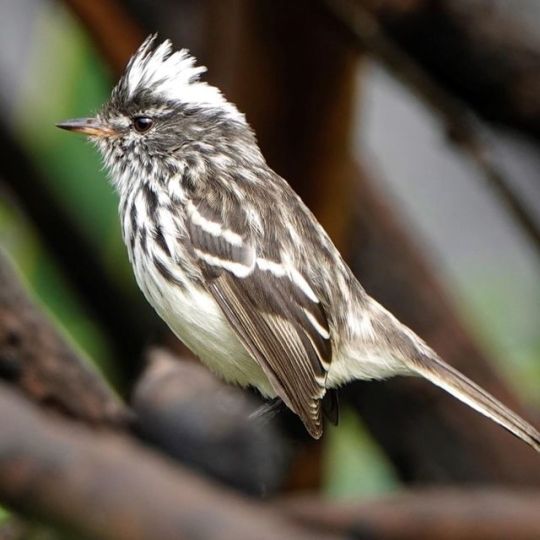
Pied-crested Tit-Tyrant | Torito de Cresta Pintada | Anairetes reguloides @ Mejía, Perú | June 2019 - The Pied-crested Tit-Tyrant is a small and energetic bird present from central Peru to northern Chile (west Andes slope). It has distinctive black and white streaks on the breast and back, as well as a bifurcated crest reminiscent of horns, which gives it its spanish name: Torito (little bull). Ranging from coastal thickets up to Polylepis forest at 4000+ MASL, it furtively moves through dense vegetation, foraging on small insects, usually by perch-gleaning. Fortunately, still classified as Least Concern. - El Torito de Cresta Pintada es un ave pequeña y enérgica presente desde el centro de Perú hasta el norte de Chile (ladera oeste de los Andes). Tiene rayas blancas y negras en el pecho y lomo que lo distinguen, así como una cresta bifurcada que pareciera cuernos, lo que le da su nombre en español: Torito. Su hábitat habitual va de matorrales costeros a bosques de Polylepis a más de 4000 MSNM, en los que se mueve furtivamente a través de la densa vegetación, alimentándose de pequeños insectos, por lo general al vuelo. Afortunadamente, todavía se le clasifica de Preocupación Menor. - Photos: @paul_bradley_silva Sony RX10 Mk IV ƒ/4 | 1/125s | ISO-64 | 600mm @ 35mm equiv. - Follow us! | Síguenos! facebook.com/hillstarbirding instagram.com/hillstar_birding - References | Fuentes: Cornell Lab of Ornithology National Audubon Society BirdLife International Princeton Birds and Natural History Handbook of the Birds of the World Alive Corbidi - Centro de Ornitología y Biodiversidad Arkive - #birds #birding #birdwatching #nature #wildlife #animals #birdphotography #naturephotography #birdlovers #birdphotobooth #birdsofperu #peru #wildlifephotography #conservation #animalphotography #naturelover #wild #visitperu #liveauthentic #exploretocreate #adventureculture #wonderoutdoors #YTúQuéPlanes #PeruTheRichestCountry #igersperu (at Mejía, Arequipa, Peru) https://www.instagram.com/p/BysKG7ig9pF/?igshid=12vuimsvfu3z0
#birds#birding#birdwatching#nature#wildlife#animals#birdphotography#naturephotography#birdlovers#birdphotobooth#birdsofperu#peru#wildlifephotography#conservation#animalphotography#naturelover#wild#visitperu#liveauthentic#exploretocreate#adventureculture#wonderoutdoors#ytúquéplanes#perutherichestcountry#igersperu
51 notes
·
View notes
Quote
A teacher’s goal for students is to win the games.“ Credit by saying - Anand Raj, MASLED 2019
youtube
Journal 10
4 notes
·
View notes
Photo
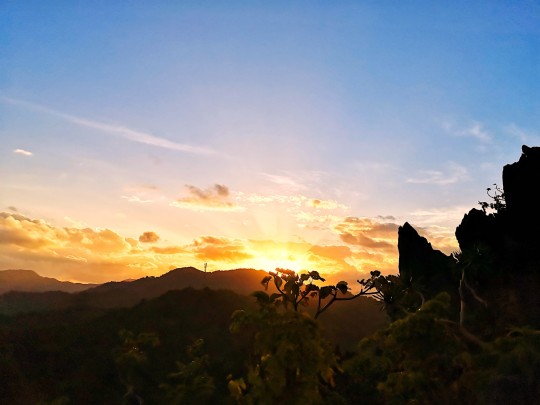
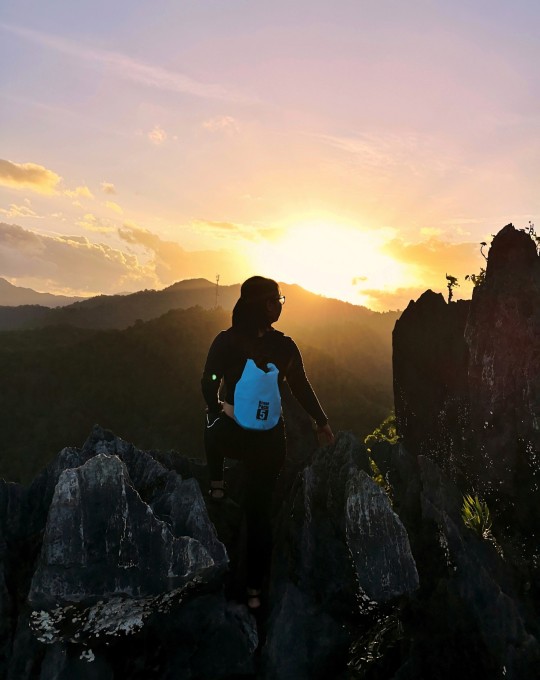

November 27, 2019 | Taraw Peak El Nido, Palawan
Graced by a sky full of stars at five in the morning, I thank Paps. I then geared myself up and met Hansel, my guide, and headed to the jump off. Medyo prepared naman ako, I think. I even had my training climb in Rizal early this month. So make way for Dora, folks. Let’s go!
The trail was ascending gradually as we move into the jungle. From the first minute to the last, we were clambering more than climbing. The terrain was rocky and steep with jagged limestone rocks. There were few vertical sections that reminded me of my once-in-a-lifetime spelunking stint in Sagada. They made the ascent more difficult than it already was. I couldn’t help but wonder how in the world will I climb down this trail later. Self, paano? Haha.
At six, we finally reached the top (250 MASL). And once we cleared the final stretch, the view opened up and what a view it was. It made for a phenomenal landscape of Bacuit Bay and El Nido town. I slowed my racing heart and waited for the night to thin out as the sun climbed the horizon. My delight quotient scored high. Good morning, El Nido. And thank You, Paps.
Like my premonition, going down was a lot more challenging. I enjoyed maneuvering the rocks and crevices but I obviously lacked endurance. But I’m still proud of the way I did the hike. This is by far my hardest rock scrambling ever and I survived with flying colors. Strong and courageous? Who am I not to be? I’m a child of God after all. We’re back at the safe ground around eight–drenched and tired and satisfied. Thank You, Home Team.
1 note
·
View note
Text
My Top 5 Gateway (#4)
If you saw my last review for Goodbye Days by Jeff Zentner, you’ll have read the introduction for my Top 5 Gateway picks and what that means. Here’s a little housekeeping before my next recommendation:
Check out what the MASL Gateway Readers Award for Young Adults is by clicking here!
If you want to be a Reader Selector (like me!) then you can read more about those duties using this link - Reader Selector.
Here is the complete list of Top 15 nominees for the 2019-2020 award.
These are MY Top 5 picks, so who knows if they’ll actually win?
Without further ado….here’s my #4 pick for the 2019-2020 Gateway Readers Award.

Image from publisher’s website
Eliza and Her Monsters by Francesca Zappia
Release: 2017
Publisher: Greenwillow Books
Fracesca Zappia is quickly becoming a favorite of mine. Her novel, Made You Up (2015), was one of the Top 15 Nominees for the 2016-2017 award so I’m not surprised this novel was also on the committee's radar (she has a new book coming out in October 2019 called Now Entering Addamsville that I’m really looking forward to reading). Eliza and Her Monsters is adorable as heck and I’m happy to pick it as one of my Top 5!
Eliza Mirk is famous, but nobody knows about it and that’s how she wants it to stay. Eliza is socially awkward, anxious, and has created an internet webcomic sensation called Monstrous Sea. She doesn’t understand her family, they don’t understand her, and she doesn’t realize how deep her sense of self is tied to her story. That is, until Wallace starts attending her school and she discovers that he is the biggest Monstrous Sea fan. Eliza is going to have to face her monsters head on before she learns to be truly happy.
I love this book for a few reasons:
The writing is adorably nerdy.
Eliza is incredibly relatable to the target audience.
There is healthy discussion about the use of technology as a form of socializing.
This is a book about self exploration and self love.
Zappia has actually written the fictional works of her characters. You can find Monstrous Sea here and The Children of Hypnos here.
Definitely get out there and enjoy the beauty that is Francesca Zappia’s writing! If this one doesn’t seem like a good fit for you, then I’d recommend her others as well.
#Eliza and Her Monsters#francesca zappia#gateway readers award#Missouri Reading Awards#Read#Book Suggestion#YA Fiction#YA novels#YA Book Suggestion#The Bookish Austin#Books with artwork
4 notes
·
View notes
Text
Womanlalaboy’s Travel Guide to Mt. Manalmon and Mt. Gola

SUMMARY
Elevation: 196+ MASL (Mt. Manalmon); 192+ MASL (Mt. Gola) Jump- off: Sitio Madlum, Brgy. Sibul, San Miguel Days / hours to summit: Half-day Climb: Minor Difficulty: 2/9 Trail class: 1-2 Features: Beautiful landscapes with various terrain types, a view of the Madlum River, with access to 2 caves
Type of Travel: Package and DIY Date of Travel: Jul 27-28, 2019 Duration: 2D1N Budget: P 1100 - 1500
If you want a climb that is filled with adventure and a variety of sights, Malmon-Gola twin hike is just right for you.
Both are nestled within the protected area of Biak Na Bato National Park. The trail leads to bamboo forests, grasslands and rock formations. There are areas that need to be climbed with the aid of ropes, including Mt. Manalmon’s peaks. Side trips are available for adventure junkies and history enthusiasts. You can sample the Bayukbok Caves and the Madlum cave. You can also go to Madlum River for a dip, and try the monkey bridge.
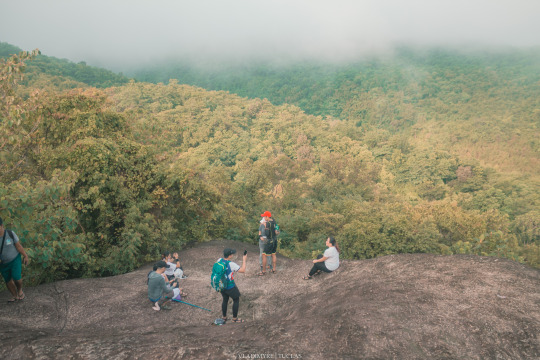
To get from Mt. Malmon to Mt. Gola, hikers will have to cross the Madlum River with water raising up to chest level when raining and with current strong enough to pull anyone of any size. But if the weather’s on your side, this twin hike would be very easy for any beginner. Some would even call it a ‘pabebe’ hike, but never when the conditions change. Like what people always say, “never underestimate a mountain.”
HOW TO GET THERE
Commute from Manila: Take a bus from Pasay or Cubao terminals to Cabanatuan (Baliwag Transit, ES Transport, and Five Star Transport) > drop off at Brgy. Kamias, San Miguel, Bulacan > Ride a tricycle to Brgy. Madlum
Private car: NLEX > Take Sta. Rita exit > Follow the road to Cagayan Valley, passing by Plaridel,Pulilan, Baliuag, San Rafael and San Ildefonso > At San Miguel, ask directions for Brgy. Madlum
It should only take 2-3 hours to get to Bulacan from Manila, but you should always give more allowance to heavy traffic especially when it pours. We were lucky enough to pass through EDSA with ease, but we encountered heavy traffic along Nueva Ecija and Bulacan so it took us about 6 hours to get to the Jump off from Cavite.
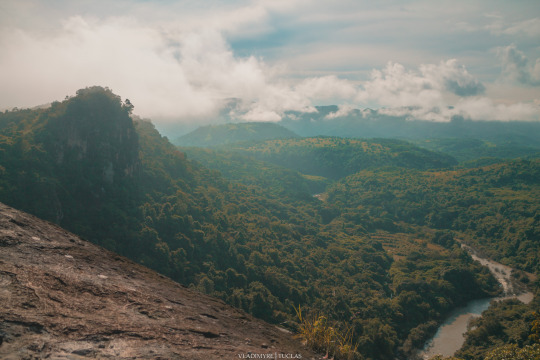
ITINERARY
Day 1 10:00 AM – ETD Lumina, Imus 02:00 PM – ETA in Sitio Madlum 06:00 PM – Pitch Tent 07:00 PM – Dinner 09:00 PM – Light's off Day 2 04:00 AM – Wake up Call 05:30 AM – Start Trek to Mt. Manalmon 06:30 AM – Summit Manalmon 07:30 AM – Descend 09:00 AM – Summit Mt. Gola 10:30 AM – Descend 12:00 PM – Lunch 02:00 PM – Monkey Bridge 03:00 PM – Bayukbuk Cave 04:00 PM – Swimming @madlum, River 05:00 PM – Break camp 06:00 PM – Post Climb 10:00 PM – ETA Lumina Imus
It was pouring rain when we arrived at Sitio Madlum, so we had a hard time following the itinerary. We’re just lucky to be spared by the weather every time we get to a peak. It’s as if the Gods are giving us time to take photos and enjoy the scenery. We’re really glad for moments like the above photo where the sky started to clear out and we just rested for a fer minutes to marvel at the beauty of the entire Biak Na Bato.
Before our actual hike, we had an outreach program and there’s supposed to be a tree planting activity included in the itinerary, but we ran out of seedlings to use. There was a huge tree planting event before our hike so there were nothing left for us to plant, but we’ve successfully executed the distribution of food, school supplies and slippers to the kids of Sitio Madlum, so all was well except for when we had to descend from Mt. Gola. Our guide opted to change our route. We followed the river instead of crossing it in that condition. Being prepared for situations like this proved to be very essential so I’ve listed below the things you may want to consider.
THINGS TO BRING
Head lamp or Flashlight
Rain jacket (depending on the weather)
Sun Block Lotion & Insect Repellent
Food (Lunch, Snacks, and Trail Food)
Water (2-3 liters)
Extra Clothes
Trekking Clothes, Shoes or Sandals
Gloves
Bonnet/Head Gear/Scarf/Malong
Garbage bag
Sun Protection (hats, headgear, sunglasses, sleeves)
Personal Medicine and First Aid Kit
Personal Toiletries
Tent
Cook set
Portable stove
Spoon,fork,plates,mugs/tumbler
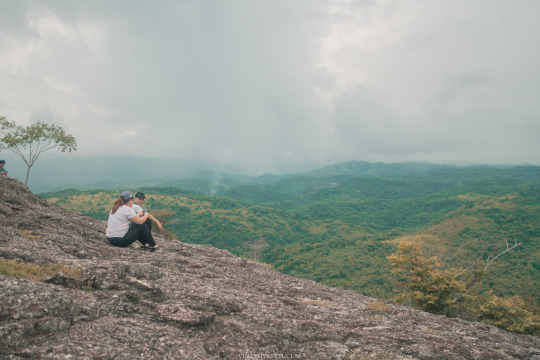
FAQs
Is there mobile signal in the area? Yes, even at the peak, but thunderstorm and heavy rains usually affect the signal at the foot of the mountain.
Are there stores in the camp site? Yes. There are a few stores there that offers the usual sari-sari store stuff. You can also reserve your lunch or dinner at Tata Carding’s.
Are there comfort rooms in the area? At the camp site, yes. And there are fees. P5 for change of clothes, P20 for taking a bath, P10 for taking a dump and P5 for when you need to pee.
Is there a parking are? They don’t have an organized parking area. We parked our vans near the hanging bridge.
Are the guides required? Yes. P300 per guide for 5 pax.
Can you hike both mountains in just a day? Definitely! if you’re a beginner or with beginners, 2hrs tops and you’ll reach one peak. If your group is pretty fit, you’ll do good with an hour of trek, but things can get really challenging when it pours.
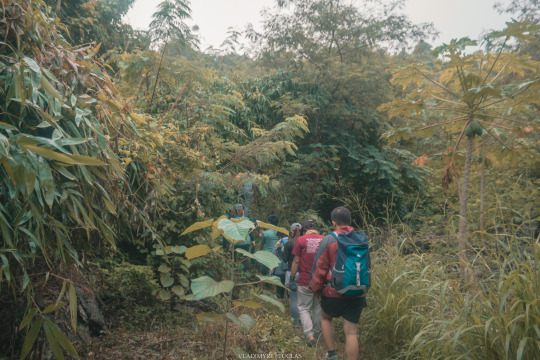
NOTES
As always, practice LNT (Leave No Trace). We are mere visitors. Let’s respect the place and its people by taking with us what we brought there. You might get tempted to dump your waste in their trash bins or makeshift trash bags, but please be mindful that what you bring in the place aren’t supposed to be there. Dispose of your own trash.
Kill nothing but time, take nothing but pictures, leave nothing but footprints.
When in doubt, practice UPS (Upo Para Safe) and GPS (Gapang Para Safe). For some, steep areas can get very tricky and dangerous, so sit or crawl if you need to.
Establish a good relationship with your co-hikers and guides just because :)
Camp if your schedule and itinerary can allow you. Their campsite is by the river and it gets so majestic at night when the moon reflects on the surface of the water.
Communicate with your body. This twin hike is supposed to be easy, but it can get really dangerous when it rains.
Hiking these two mountains are best done with fun friends and to maximize your stay, swim; enjoy the caves and do the monkey bridge. The site has so much to offer than just hiking Gola and Manalmon, but for me, the sight of luscious bamboo forest, carabaoes living the life, and seeing wild dragonflies again are more than enough to compensate the hassle of camping and hiking whilst raining.
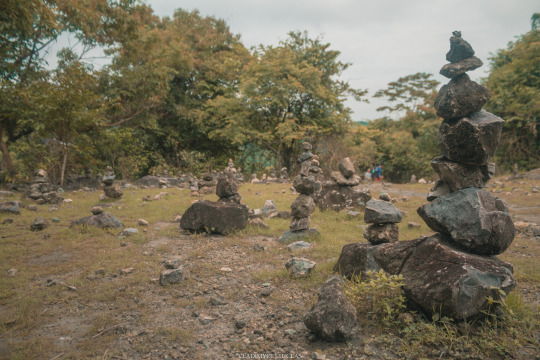
MORE...
Also see: Mt. Manalmon and Mt. Gola photo sets Also read: Panhik #6: TUCLAS Gives Back + Manalmon-Gola Twin Hike Also read: Panhik #5: Dayo Sa Daguldol Also read: Womanlalaboy's Travel Guide to Mt. Daguldol
#womanlalaboy#travelguides#travel guide#manalmon-gola twin hike#twin hike#bulacan#travel#travelph#discoverph#discoverphilippines#biak na bato#biak na bato national park#hike#hiking#trek#trekking#pilipinas#pilipino#filipino#philippines
4 notes
·
View notes
Photo

Welcome Back @geshavillage 2019 Two Sizes Available: 113g & 226g 🇪🇹 Gesha Village Bangi Lot #70 Gori Gesha | Natural 1909 - 2069 masl Nectarine | Raspberry | Orange Blossom 🇪🇹 Gesha Village Gaylee Lot #74 Illubabor Forest | Natural 1916-1982 masl Apricot | Cinnamon | Cane Sugar Seriously 😋 🤤 Use code “GeshaVillagePickUp” at checkout on our website for in store pick up First come first serve Have a good week ahead, everyone! #movingcoffee #movingcoffeeroastery #movingspecialtycoffeeforward (at Moving Coffee Roastery) https://www.instagram.com/p/BxfQ65Fh7gS/?utm_source=ig_tumblr_share&igshid=1jdlf9baqc6ij
8 notes
·
View notes
Text
Lupine Publishers|Participatory Variety Selection in Increasing the Availability and Diversity of Improved Faba Bean (Vicia Faba L) Varieties in Some Selected Woredas Of Arsi Zone
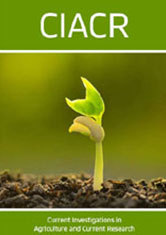
Abstract
The experiment was carried out in Hexosa, Munessa, Digalu Tijo and Cholle districts of Arsi Zone with the objectives of enhancing production and productivity of faba bean on farmers’ fields and to improve linkage among stakeholders and create awareness on improved faba bean varieties and indirectly decreasing the cereal mono-crops systems of the areas. Four kebeles farmers training center were selected purposively based on faba bean production potential. Consequently, Oda jila kebele from Hexosa, Chaffa from Munessa district, Haro bilalo from Digalu tijo and Amuma salam bar from cholle district were selected. All management practices were done at the levels of local farmer’s levels for eight improved and one locally available faba bean varieties were shown and evaluated. The experiment was established on 25 m2 Demonstration Plots and DAP 100 kg/ha at the time of sowing applied to each demonstration plot with recommended seed rate. Both quantitative and qualitative data was collected through observation, group discussion on field day and data recording sheet. The significances of improved varieties along with local variety were also analyzed through SAS-software. While qualitative data were analysed through simple ranking and summarization. The result of the study indicated that the best varieties namely Gebelcho, Moti and Degaga were frequently selected as top ranking in all districts as final selections or adapted varieties. Therefore, these varieties are recommended for further popularization and scaling up in study area and similar agro ecology.
Keywords: Faba bean; Demonstration; Varieties
Introduction
Faba bean is the first most important pulse crops produced in Ethiopia both in terms of area coverage and annual production (CSA, 2018/19). It is grown at an altitude range between 1800-3000 masl, in place at the soil and weather are considered to be congenial for better growth and development of the crop. According to (FAO, 2017), in Ethiopia about 343,107.88 hectares of land annually covered in Faba bean with estimated production of 6,389,438.97 quintals. In Ethiopia, faba bean is the leading source of protein for the small holder farmers and used to make a number of traditional dishes. Moreover, the crop is source of income for producers either locally and foreign exchange for the country. It has also a line share on improving soil fertility through fixing atmospheric nitrogen and. In Arsi zone, Faba bean is cultivated in mid highland to highlands of the region occupies about 54.4% hectares of land annually with estimated production of 58.5% quintals from a total of pulse crop (CSA, 2019/2020). The regional (23.5 qt/ha) average yield of faba bean has remained low (CSA, 2019/2020). Even though the crop has a number of potential uses, the productivity of the crop is far below the potential and is constrained by use of traditional practices including unimproved farmer cultivar, poor agronomic practices, prevalence of insect pests and diseases and declining of soil fertility. However, crop production under varied agro-ecological conditions of the country would require modern varieties that fit to diverse ecologies. Individual farmers as well as Community based Seed Producer Cooperative farmers are highly demanding better yielding varieties to maximize their product and improve the livelihood of their families. Participatory Varietal Selection (PVS) has been proposed as an option to the problem of fitting the crop to both target environments and users’ preferences. Moreover, it is worth mentioning that there are sound scientific and practical reasons for farmer involvement to increase the efficiency and the effectiveness of a breeding program Therefore the present study geared to words identifying high yielding improved faba bean varieties adapted to the selected districts that are acceptable to farmers in study areas.
Materials and Methods
In the present investigation eight released faba bean varieties with local checks were evaluated in 2016/2017 at four Woredas; Hexosa(Oda jila FTC), Digalu Tijo (Haro bilalo FTC), Munessa(Caffa FTC),Cholle (Akiya FTC) and Cholle(Amuma selam bar FTC) in which all locations are found in Arsi, south eastern Ethiopia. All locations were representing highland areas with variable soil type i.e., dark clay-loam, clay-loam, loam Clay loam and clay loam respectively. The trial was laid down in a single plot of 5m x 5m size. Each variety was planted in rows with spacing of 0.4m between rows and 1m between plots. DAP fertilizer was applied at the recommended rate of 100 kg/ha at sowing. Seed rate of 200 kg/ha was used. Eight released faba bean varieties including Gora, Tumsa, Gebelcho, Dosha, Moti, Obse, Degaga and CS20DK, and one farmer cultivar (local check) was used for the study to seek farmer’s preferences through participatory variety selection. Both quantitative and qualitative data were collected through observation, group discussion on field day and data recording sheet by researchers’ groups and farmers separately. Data like farmer preference on disease and pest’s resistance, early maturity, drought tolerant, grain color, and yield data were collected through the prepared data collection sheet/record sheet by organizing mini field day and observation on farmer’s field. Invited participants were gathered at the host farmers’ field to assess the faba bean varieties at flowering stage, at maturity and at harvest, assisted by scientists, assistants from Kulumsa Research Center and agricultural experts from each Woredas. Out of the 113 participants at districts 27 were women (24%). During the evaluation farmers assembled to discuss what they thought were the important criteria for selecting a given variety at a particular development stage. Each criterion was scored from 1 to 5 (1 =Excellent, 2 = very good, 3 = moderate, 4 = bad and 5 = worst) for each variety. Participant farmers were also asked to give an overall score to each variety. Farmers were selected among participants at each district to evaluate varieties from the PVS trials. Each of the randomly selected farmers were given eight faba bean varieties and oriented to manage all plots equally. Farmers assessed the varieties at flowering and maturity and at harvest. At maturity, farmers scored each variety for earliness, seed per pod, and pods per plant; at harvest varieties were scored for seed size, grain color, straw yield and grain yield. Again, scores were given on a scale from 1 (excellent) to 5 (worst). At maturity and harvest, farmers were asked to give an overall assessment of each variety, using the same scale.
Data Analysis
SAS-software analyses were used for the crop performance concerning yield and yield components of the experiment harvested from PVS plot. Improved varieties along with local variety were also compared. While qualitative data were analyzed through simple ranking and summarization.
Results
Evaluation of Researchers
Mainly researchers’ evaluation was focuses on the yield status of all considered faba bean varieties across location in which the varieties shown a distinct statistical variation in grain yield that was significant difference among the faba bean varieties in each location (Table 1). Accordingly, at Hexosa district the highest yield were recorded for faba bean variety Gebelcho (4011kg/ha), Gora (3891kg/ha) and Dosha (3867kg/ha) whereas, the lowest yield were recorded for local check variety (1976kg/ha). At Munessa district, the highest yield were observed for faba bean variety Degaga(3912kg/ha), Moti(3867kg/ha) and Gebelcho (3621kg/ha) but the lowest yield were recorded for local check variety (2213kg/ ha). At Digalu Tijo district, the highest yield were observed for the faba bean variety Gebelcho (4123kg/ha), Dosha (3866kg/ha) and Degaga (3758 kg/ha) while the lowest yield were recorded for nearby available faba bean variety as a local check with (2613kg/ ha). Finally, at Cholle district the highly yielded faba bean varieties are Degaga (3853kg/ha), Moti (3704kg/ha) and Dosha (3441kg/ ha) while the lowest yield were recorded for local variety (2333kg/ ha) respectively. In conclusion the faba bean varieties like Gebelcho, Dosha and Degaga showed a stable yield performance across all location which put them prior rank, while the faba bean varieties used as a local check at each district and CS20DK were poor yield performance at all location that revealed the progressive improvement of yield and a wider adoption scope of faba bean varieties in Ethiopia. Similar works are reported for some improved faba bean varieties those showed a good performance in both yield and adoption rate across different location by [1,2,3].
Farmers’ Variety Evaluations
Farmers being the end-users of agricultural technologies are the primary beneficiaries in a participatory variety selection program. The researchers benefit from the participatory variety selection process also in the form of a feedback that helps them to re-orient their research program to better meet farmers’ needs. Selection was carried out at three different growth stages by organizing a field day at each stage i.e at vegetative, flowering and physiological maturity. Representative farmers from the study area were participated and evaluated the participatory variety selection trial. Mainly farmers are more interested on additional demands (taste, cooking quality, amount of straw, height, performance under direct seeding, under suboptimal management conditions, weed competitiveness) and stand strength (lodging resistance), number of pod, number of seed, length of pod, maturity, chocolate spot resistance, aphid resistance, seed size, leaf shading, seed color and grain yield during selection process. The evaluations mean preferences of the farmers score values for each variety were ranked in (Table 2). Therefore, at Hexosa district, farmers are more preferred faba bean variety Gora (3891kg/ha) as a first rank with an exceptional traits of large seed size. It is followed by faba bean variety Gebelcho (4011kg/ha) and Moti (3611kg/ha) as a second and third rank for pod per plant and adoptability to the areas. Irrespective of this, the faba bean variety considered as a local check (1976kg/ha) was ranked at the end in this district but they preferred the tests during a fresh conception. At Munessa district the front line faba bean variety ranks are Moti (3867kg/ha), Degaga (3912kg/ha) and Gebelcho (3621kg/ha) with their respective orders and while the faba bean used as a local check (2213kg/ha) from this district was selected at last ranks. In overall all participants are satisfied with the adaptabilities of all considered faba bean varieties even if they are varied in some individual’s farmer’s criteria. Faba bean varieties like Gebelcho(4123kg/ha), Degaga(3758kg/ha) and Dodha(3866kg/ha) are orderly ranked while faba bean varieties CS20DK (3071kg/ha) is less preferred by farmers among the considered varieties specially due to less adopted to the area (Digalu tijo) district. In further, the highly preferred faba bean varieties by farmers at Cholle district were also Gebelcho (3422kg/ha), Moti(3704kg/ha) and Degaga 93853kg/ha) with their respective orders whereas, faba bean varieties CS20DK (2986kg/ha) were stumpy preference behind farmers due to less adopted, small seed size, chockolate spot occurrence and pod per plant accommodation as compared to the other varieties. In General, the best varieties namely Gebelcho, Moti and Degaga were selected as top ranking in all districts as final selections or adapted varieties. The same varieties had better performance and found to be promising from the analysis of researchers’ collected data. In line to this finding [2-5]. stated that some nationally released faba bean varieties like Gebelcho, Gora, Dosha was the primary ranked variety by farmers selection.
Discussion
It is a long time that Kulumsa Agriculture Research Centre (KARC) has been carried research activities to generate new production technologies, mainly genetically improved faba bean varieties as a national coordinator and collaborator in which more than 17 faba bean varieties are released nationally. Aside of a number of improved varieties, the adoptions and dissemination was very limited in Arsi. On the other hand a successful seed program that promotes, supplies sufficient quantity of high quality seed of adapted varieties on time and with reasonable cost remains a major constraint. This situation is much worse in faba bean compared to cereals such as wheat and barley in Arsi. In order to alleviate this problem, one approach that has been practiced, mainly in resource-poor farming communities, is faba bean Participatory Variety Selection (PVS) in different Arsi districts. Based on this study, farmers feedback were indicated as more benefited from faba bean participatory variety selection is an approach to provide choices of improved faba bean varieties to the participant farmers for increasing production in their diversity of socioeconomic and agro-ecological conditions. They understand also as an opportunity to large number of improved faba bean varietal choices on their own resources and enhance all farmers’ access to crop varieties and increase variety diversity. Besides, it allows varietal selection in targeted areas at cost-effective and also in less time, which helps for easy adoption and dissemination of released varieties in larger areas [6-8]. It is also a selection process of testing released or promising genotypes in farmer’s field, includes research and extension methods to deploy genetic materials at on-farm experiment [8]. In other hand this study points out as gap that, the speed of improved faba bean variety dissemination, particularly in Arsi where farmers have access to produce other crops like wheat, which is easy to implement different available farm mechanizations. As a result, in most of the area farmers are practicing mono culture of wheat and face different production problems. Now marketoriented agricultural research and production is the policy of the Ethiopian government as the selected crops are used for industries and exports, there are openings where farmers can participate in aid of the selection process through highly client-oriented breeding [9-10]. In further, assessment of formal research methods for failure to produce appropriate technologies for resource-poor farmers, and “inappropriate” (not participatory/centralized) institutional structure of agricultural research has led to the initiation and developments of Farmers Participatory Research (FPR) approaches In overall, this faba bean participatory variety selection has been very successful both in facilitating adoption by poor farmers in all considered districts those are marginal environments of Arsi, not previously reached by formal plant breeding, and in understanding farmers’ preference. This finding was more or less similar with that of [1,2]. and However, participatory variety selection lacks the cyclic nature of plant breeding with a continuous flow of genetic material from one stage to next, and it is not clear from the literature on participatory variety selection whether, how and when a farmer or a farmer community who have practiced participatory variety selection, will have another chance of participating in variety selection. Basically, participatory communication must meet in which researchers learn from farmers, not the other way round and talk with the farmers, not to the farmers.
Conclusion
The overall message of this finding was indicated faba bean participatory variety selection at the considered Arsi districts had a line share contribution towards enhancing food security and improved livelihood of small-scale farmers through increased faba bean production and productivity and increase awareness on improved varieties (for chosen) and dissemination through farmer-to-farmer seed exchange mechanisms. Particularly, an increased farmers’ faba bean productivity and income as a result of availability of high yielding suitable varieties, that suit to farmers selection criteria availed and there is also the capacity of the farmers and extension agents would be boosted on seed production that resulted income increment due to adoption of technologies and practices attributable to faba bean participatory variety selection intervention.
For More Information Click onhttps://lupinepublishers.com/agriculture-journal/
https://lupinepublishers.com/agriculture-journal/index.php
Please Click Here https://lupinepublishers.com/agriculture-journal/archive.php
4 notes
·
View notes
